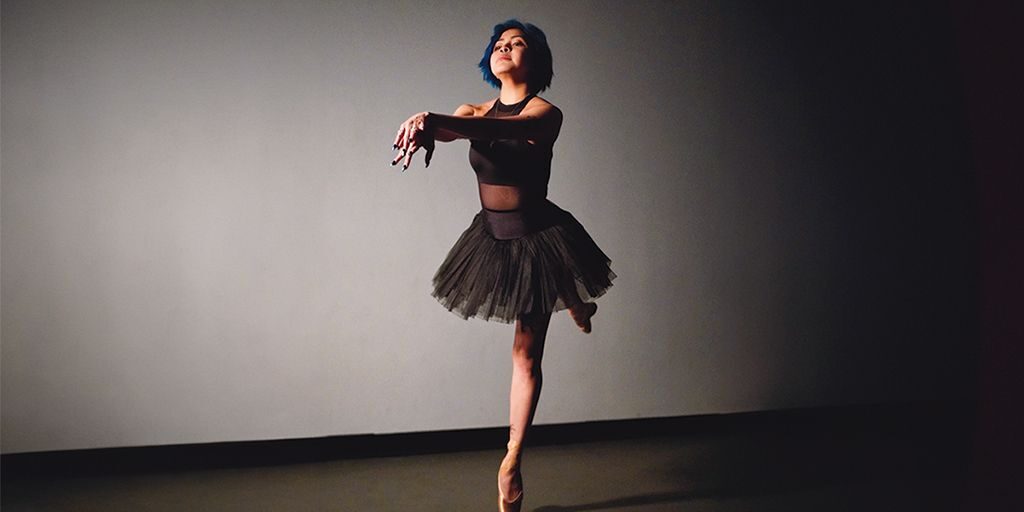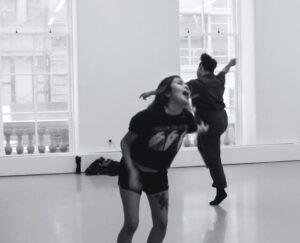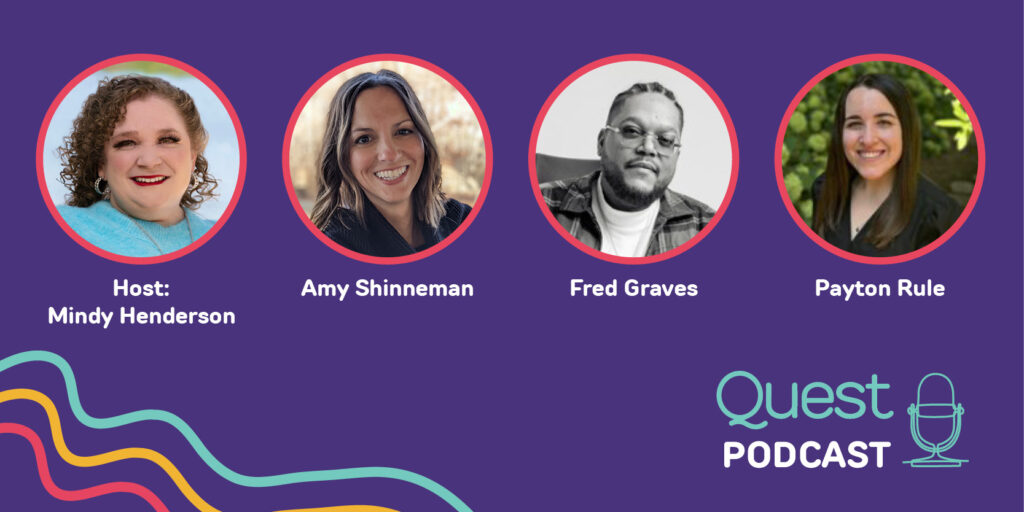
Managing Myasthenia Gravis With Grace
By Rebecca Hume | Thursday, May 9, 2024

Carol, pictured in a rehearsal, loves the expressiveness of dance.
Carol Alvarez is a professional ballet dancer, dance instructor, and founder of a New York-based program teaching dance to school children. For Carol, who uses the pronoun they, building a dance career involved chasing their dreams with optimism, hard work, and a few unique challenges. Diagnosed with myasthenia gravis (MG) at 14, the now 25-year-old has found balance and grace while navigating their disease on their quest for success.
“I love how expressive you can be with ballet,” Carol says. “When you are performing and you are able to express yourself, you can forget about everything else in the world — for me, that includes my diagnosis and the challenges of living with MG.”
Carol’s MG causes a degree of muscle weakness, fatigue, and limited stamina every day. Flare-ups can affect their whole body, making it difficult to walk and speak, resulting in hospital stays. Carol receives Vivgart infusions to manage daily symptoms and intravenous immunoglobulin (IVIG) treatments during flare-ups. Physical therapy helps Carol regain strength after flare-ups.
Discovering dance
Carol’s passion for dance began when they took ballroom dance classes in fifth grade, leading to a love of ballet in their early teens. They attended the Frank Sinatra School of Performing Arts in Queens, New York. After two weeks of college, Carol realized that dance was their professional calling and left to attend the Joffrey Ballet School in Manhattan.
Ballet school was one of the most challenging — and rewarding — chapters in their life.
“I told myself that if I could get through these four years and do it by myself financially while attending Joffrey with an eight-hour dance day, going to work afterward, and managing MG flare-ups — and do the same thing the next day and the next day — if I was able to do that, then I wouldn’t let anything get in my way,” Carol says. “That was a difficult time in my life, but I decided that I was going to make it, and I did.”
Symptoms and sashays
Understanding their body’s needs and limitations is an important component of Carol’s health. “I get fatigued a lot quicker and more easily than others,” Carol says. “I have to be really smart about meds and taking care of myself before and after teaching and rehearsals, and sometimes I sit on the floor and teach from there on hard days.”
Their mobility and stamina are most significantly impacted during medication changes and MG flare-ups. During those times, they often need to take a break.
At Joffrey, if Carol had a flare-up or needed rest and recovery, their neurologist provided a note to request that they be excused while in the hospital or allowed to observe dance classes for a few days. When Carol interviewed to be a dance instructor at the Mark Morris Dance Center after graduation, they were up-front about their diagnosis and needs.
“Before working at Mark Morris, I didn’t openly share my diagnosis. I didn’t want anyone to think that I was different or weird. But when I interviewed, I was very blunt and clear about my diagnosis and that flare-ups might require me to be hospitalized for a week or two. They are very accommodating; I love working there,” Carol says.
Their employer’s and fellow teachers’ support has helped Carol rest, reset, and come back stronger after flare-ups and setbacks. They continue to perform and teach. The connections they’ve made through Mark Morris have also inspired them to spread their love of dance.
Sharing their passion
In 2020, Carol started a program to teach dance to children in daycares and public schools throughout New York City.
Carol’s program gives children an opportunity to express themselves through dance and reminds children to pursue their own dreams.
Carol also became an MDA Ambassador to share their story and mentality with others living with neuromuscular diseases. They hope to show that believing you can achieve whatever goals you set for yourself can open new pathways in life.
“My advice to children and adults is never be afraid of your goals or what you want to do — just keep going,” Carol says. “You’ll get to your end goal eventually, and it might take longer than you planned, but you will be able to do whatever you set your mind to.”
Rebecca Hume is a Senior Specialist and Writer for Quest Media.
Next Steps and Useful Resources
- Find more personal stories from members of the neuromuscular disease community.
- Stay up-to-date on Quest content! Subscribe to Quest Magazine and Newsletter.
TAGS: Ambassadors, Quest for Success, Staying Active
TYPE: Featured Article
Disclaimer: No content on this site should ever be used as a substitute for direct medical advice from your doctor or other qualified clinician.




